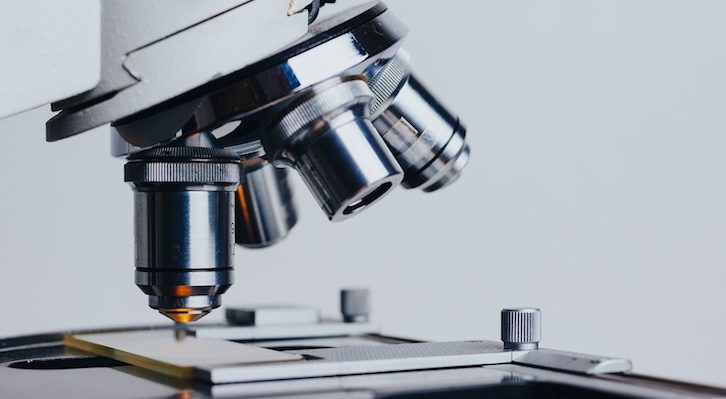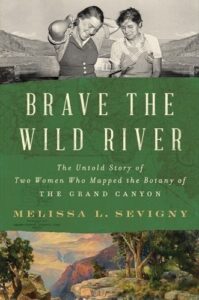
How Women and Girls Struggle to Pursue Their Interest In Science
Melissa L. Sevigny on the Need to Tell More Stories About Ordinary Female Scientists
Career Day at kindergarten wasn’t going well. Worksheets splayed across the tables, each with a suitable illustration waiting to be colored with crayons: fireman, postman, doctor, vet. I had gone through every page and dissolved into tears. I couldn’t find my dream job. I wanted to be a geologist.
Somewhere in a box in the attic, I still have the drawing I made that day on a lined sheet of notebook paper, my teacher’s careful handwriting supplying the word geologist at the top of the page. My self-portrait was, more or less, an oval with stick arms and legs, seated at a table in front of an object that might, with a little imagination, be called a microscope, rocks strewn on every available space.
In a famous, oft-replicated study first conducted in 1960s, researchers ask children to draw a picture of a scientist. A recent analysis of five decades of drawings found that at the age of six, 70 percent of girls draw a woman. But only 25 percent of girls do so at the age of sixteen. Somewhere between six and sixteen, girls stop envisioning themselves as the person peering through the microscope, mixing chemicals at a lab bench, or wading knee-deep in a river.
I hung onto my dream a little longer than that, completing a B.S. in environmental science at the University of Arizona, a degree program I chose because I imagined it would be geology with a layer of plants on top. I graduated with a 4.0 and was named the Outstanding Senior for the College of Soil, Water, and Environmental Science.
I can’t be sure more stories about women in science will matter; it seems a frail life raft to trust.
And then I became a writer.
Advocates for women in science refer to this as the “leaky pipeline,” or more recently, the “glass obstacle course”—the attrition of women from science fields because of barriers they encounter at every step in their educations and careers. As a child, when I told well-meaning adults about my career plans, they often responded with something like, “How wonderful. We need more women in science!” At first, I was buoyed by this idea. I was an intrepid explorer, stepping out onto a vast, shining ice floe without another soul in sight, forging the way. Later, a sense of loneliness crept in, and with it, doubt. Did I belong in this place?
In 2018 I discovered a story buried in the collections of Northern Arizona University’s Cline Library. It was the story of two female botanists, Elzada Clover and Lois Jotter, who ran the Colorado River in 1938 in handcrafted wooden boats and made the first-ever plant collection in the Grand Canyon. I had never heard their names. At once, I felt a spark of kinship. That shining ice floe wasn’t so empty, after all.
My book Brave the Wild River reconstructs the events of their 1938 river trip from diaries and letters, intimate documents that reveal Clover and Jotter’s joy in adventure and love of desert plants—but also their frustrations. Clover struggled to find a job (“I would prefer a man,” one potential employer wrote bluntly) and worried her gender would affect her application for grant funding.
Jotter relied on her mentor’s presence on the river trip to protect her from the “familiarities” of men. Journalists fixated on the women’s physical appearances. One onlooker dismissed unmarried, middle-aged Clover as a “spinster.” (Clover herself used the cheerful term “bachelor” instead). Jotter, who married and had children after the river trip, left academia for more than a decade after her first child was born.
It all sounded eerily familiar. I had expected to write a book about how much had changed on the Colorado River since 1938. Ecologically, almost everything had—the dams, the encroachment of exotic plant species, the onset of climate change and drought. But the treatment of women in science was horribly familiar.
In the United States, half of all bachelor’s degrees in science, engineering, and mathematics go to women, yet those women go on to earn only 74 percent of a man’s salary in those fields. A 2018 study found that it will be another two decades before women and men publish papers at equal rates in the field of botany. It may take four decades for chemistry, and three centuries for physics. Worldwide, more than a third of women in science careers leave the workforce after they have their first child.
The same stories repeat, over and over. In 1969, when a group of five scientists and one writer became the first women on record to visit the South Pole, reporters asked if they planned to wear lipstick. Astronaut Mae Jemison, who became the first Black woman to go to space in 1992, recalls telling her kindergarten teacher that she wanted to be a scientist: the teacher asked if she really meant a nurse.
Somewhere between the age of six and sixteen, girls interested in science need to be rooted in a sense of belonging.
I can’t help wondering what might change we if told more stories about the long history of women in science. Clover and Jotter were remarkable in their determination to complete their plant study, against all the odds. But in another sense, they were perfectly ordinary. They were curious about the natural world, enthralled by desert plants, excited by the prospect of a summer of adventure, and occasionally annoyed, dismayed, or full of doubt.
And they weren’t the only female scientists working in southern Utah and northern Arizona in the late 19th and early 20th centuries—far from it. Ellen Powell Thompson cataloged plants in the area; Florence Merriam Bailey studied birds at the bottom of the Grand Canyon; Bertha Parker unearthed ancient sloth bones from a Colorado River cave; and archaeologist Katharine Bartlett and artist Gene Field Foster boated Glen Canyon before it disappeared beneath a dam.
Almost all these women were white (with the notable exception of Parker, who was Abenaki and Seneca). Many had wealth, resources, and influential brothers or husbands who championed for their scientific work. These privileges made it possible to overcome, at least partially, the sexism they faced.
But I was astonished by the sheer number of female scientists whose names I had never known before. They were young and old; married, partnered, widowed, and single. Some were mothers; some were stricken by ill health. None of them rewrote the laws of physics or added a new element to the periodic table. But science doesn’t often leap forward from the insights of an Albert Einsten or a Marie Curie. Mostly, it advances incrementally through the passion, curiosity, and hard work of ordinary people.
Inspiring girls and women to enter science careers has never been the problem. Giving them the support to stay in their chosen fields is a different matter entirely. I can’t be sure more stories about women in science will matter; it seems a frail life raft to trust on a sea of inequitable practices, including dismissal, harassment, prejudiced hiring policies, unequal pay, and lack of support for working mothers.
But what can I say? I became a storyteller instead of a scientist, and I believe that stories matter. Somewhere between the age of six and sixteen, girls interested in science need to be rooted in a sense of belonging. When I think of the loneliness of my kindergarten Career Day—not one glimpse of the future I wanted amid all those possibilities—I am sure of this: it would have made a difference to me.
__________________________________

Brave the Wild River: The Untold Story of Two Women Who Mapped the Botany of the Grand Canyon by Melissa L. Sevigny is available from W.W. Norton & Company.
Melissa L. Sevigny
Melissa L. Sevigny is the author of Brave the Wild River (W.W. Norton, 2023) and two other books about science in the Southwest. Her writing has appeared in Orion, The Atavist Magazine, and on NPR. She lives in Flagstaff, Arizona.



















